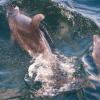Coastal Infrastructure and its Effects on Local Social-Ecological Systems: A Case Study of Ashton Lagoon, Union Island, St. Vincent and the Grenadines Research Paper
Coastal infrastructure is extensively in place across coastlines throughout a variety of geographical regions around the globe, with the rate of coastal development projects predicted to increase in the future. Oftentimes, coastal development projects are situated within semi-sheltered areas with reduced water flow, which is lessened further by many forms of hard coastal infrastructural emplacements. Ashton Lagoon, of Union Island, St. Vincent and the Grenadines is one such place. A coastal development project, although incomplete due to bankruptcy, was partially constructed in 1994. This lead to the severance of lagoon halves, a severe reduction in water flow and consequently, extensive environmental changes. This study examined the impact of hard coastal infrastructure by analyzing the biophysical (habitat, fauna and sediment) and social components of the lagoon. This was done by emulating a past biophysical study for a cross comparison of modern and historical data sets. Additionally, historical and contemporary human use patterns in the area were assessed in relation to the failed development project. Social ecological-systems theory was utilized to analyze the biological and social datasets as they pertain to the functioning of ecosystem services, so that recommendations for management of Ashton Lagoon could be made, as the area is expected to experience more development in the years to come.
Area of interest: St Vincent
Year:2018




